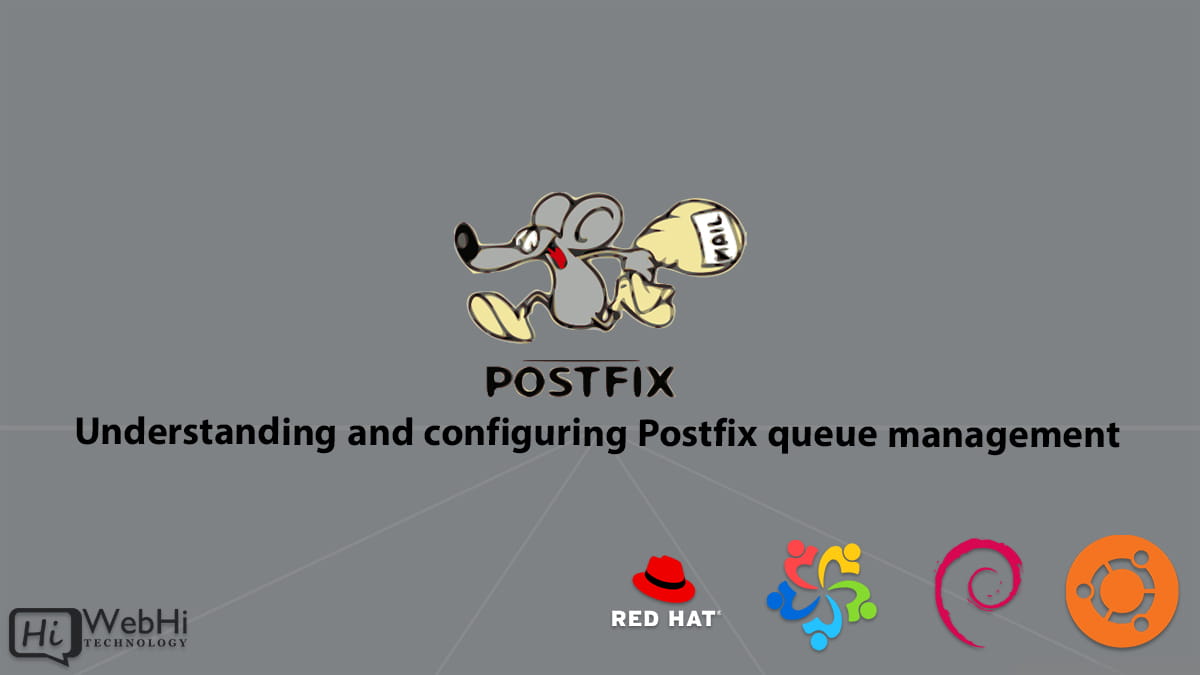
Introduction
Managing mail queues is a critical task for every email system administrator. The Postfix mail server, widely used for its reliability, security, and flexibility, offers powerful tools and commands for queue management. Properly understanding and configuring your Postfix queue helps ensure optimal email performance, reduces spam, and quickly resolves delivery issues.
In this comprehensive tutorial, you will learn in-depth concepts related to Postfix queues, the purpose behind different queue types, methods for queue monitoring, troubleshooting common issues, optimization strategies, and industry best practices.
By the end of this guide, you’ll confidently handle various scenarios encountered in managing a Postfix email server.
What is the Postfix mail queue?
The Postfix mail queue is a storage mechanism used by the Postfix mail transfer agent (MTA) to temporarily hold emails before they reach their destination. Mail queues allow Postfix to handle email efficiently, even under high loads or temporary delivery failures.
Postfix uses four primary queues:
- Incoming Queue (
incoming): For newly received mail awaiting initial processing. - Active Queue (
active): Contains messages currently being processed and attempted for delivery. - Deferred Queue (
deferred): Messages that Postfix failed to deliver temporarily but will retry later. - Hold Queue (
hold): Contains messages manually put on hold by administrators or policy actions.
Understanding these queue types will help you identify issues and optimize the performance of your mail system.
Locating Postfix queue directories
By default, the Postfix queue directories are located at /var/spool/postfix. The structure usually looks like this:
/var/spool/postfix/
├── active
├── bounce
├── corrupt
├── defer
├── deferred
├── flush
├── hold
├── incoming
├── maildrop
├── pid
├── private
├── public
├── saved
└── traceChecking the queue directories configuration
To confirm the current location of Postfix queues on your system, you can run:
$ postconf queue_directoryOutput example:
queue_directory = /var/spool/postfixUnderstanding Postfix queue commands
Several commands help manage the Postfix queue effectively:
1. mailq (or postqueue -p)
Lists queued messages with their IDs, sender, recipient, and reason for delay.
Example usage:
$ mailqOr:
$ postqueue -p2. postqueue -f
Immediately flushes queued mail (forces a retry for all deferred mail):
# postqueue -f3. postsuper
Used for managing individual or bulk messages:
- Remove specific message ID from queue:
# postsuper -d MESSAGE_ID- Clear the entire queue:
# postsuper -d ALL- Hold a message:
# postsuper -h MESSAGE_ID- Release a message from hold queue:
# postsuper -H MESSAGE_IDNote: Be careful using
postsuper -d ALLas it irreversibly deletes all queued messages.
Monitoring Postfix queues
Monitoring is essential to quickly identify bottlenecks or potential spam outbreaks.
Real-time queue monitoring
To monitor the queue size and statistics in real-time, use:
# watch -n 5 "mailq | grep -c '^[A-F0-9]'"This command refreshes every 5 seconds, displaying the total count of queued emails.
Detailed queue statistics
To gain detailed insights into queue statuses, you can use:
$ qshape deferredThis command categorizes deferred messages by recipient domain, displaying the distribution of messages over time.
Troubleshooting common Postfix queue issues
Queue-related issues can range from misconfigured parameters to delivery problems. Below are common problems and solutions:
Problem 1: Emails stuck in deferred queue
If emails frequently land in the deferred queue, it often indicates connection problems with external servers or DNS issues.
- Diagnose: Check deferred queue status and message reasons:
$ mailq- Resolution: Investigate the logs for clues:
$ tail -f /var/log/mail.log | grep deferredFix common DNS or connectivity issues based on the logs, then retry delivery:
# postqueue -fProblem 2: Spam flooding the queue
Large influxes of spam can clog your queues.
- Resolution: Identify sender patterns, and clear spam messages:
# mailq | grep "[email protected]" | awk '{print $1}' | tr -d '*' | xargs -rn1 postsuper -dImplement spam filtering tools like SpamAssassin or policy restrictions in Postfix configurations.
Configuring Postfix queue parameters for optimal performance
Postfix provides several parameters to fine-tune your queue performance. These parameters are located in /etc/postfix/main.cf.
Example configurations:
- Adjusting queue lifetime (default 5 days):
maximal_queue_lifetime = 2d- Reducing retry intervals to quickly re-attempt deliveries:
minimal_backoff_time = 300s
maximal_backoff_time = 3600s
queue_run_delay = 300s- Limiting the number of simultaneous deliveries:
default_process_limit = 150
smtp_destination_concurrency_limit = 20Remember to reload Postfix after configuration changes:
# postfix reloadAdvanced queue management tips
Automatically clearing specific queued messages
Sometimes, you might automatically clear messages matching a pattern:
# mailq | grep 'example\.com' | awk '{print $1}' | postsuper -d -Holding suspicious messages automatically
You can configure Postfix to place specific emails on hold for manual review. Add this line to /etc/postfix/header_checks:
/^Subject:.*SPAM Keyword/ HOLDActivate this by editing /etc/postfix/main.cf:
header_checks = regexp:/etc/postfix/header_checksReload Postfix to apply changes:
# postfix reloadBest practices for Postfix queue management
- Regularly monitor your queue using automated scripts.
- Keep your Postfix server and dependencies up-to-date.
- Employ effective spam filtering (SpamAssassin, Postgrey, etc.).
- Automate alerts for unusual queue growth or delays.
- Document troubleshooting processes clearly for team efficiency.
Conclusion
Effectively managing and configuring the Postfix mail queue is vital for stable email delivery performance. By understanding queue types, mastering queue commands, implementing robust monitoring, troubleshooting issues, and applying recommended optimisation practices, you ensure your Postfix server runs smoothly even under demanding conditions.
